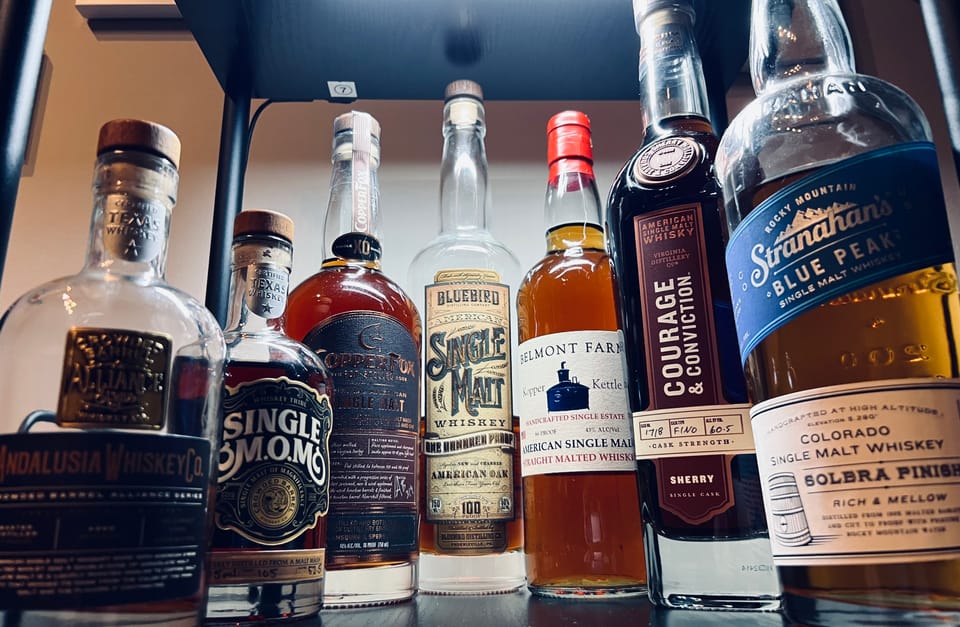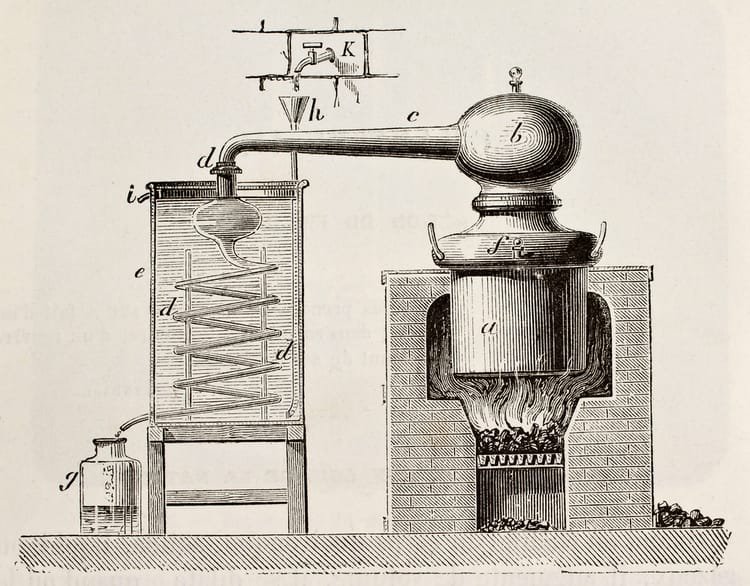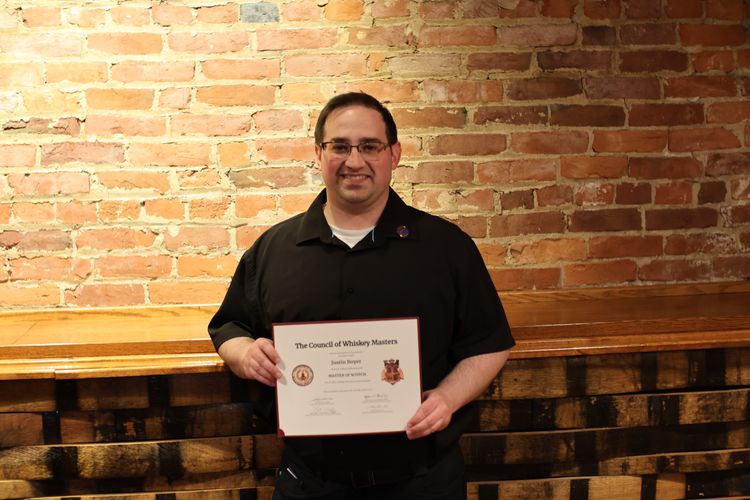American Single Malt Finally Made Official

The day has finally come. After years of waiting and debating, the United States Alcohol and Tobacco Tax and Trade Bureau (TTB) has created a legal definition for American single malt. That means American single malt is now an official and protected whisky category in the United States. Whiskies that desire this designation must meet specific requirements.

What's the Definition of American Single Malt?
The new standard of identity for American single malt will be filed on December 18th, 2024, and will take effect on January 19th, 2025. To be legally called American single malt, a whisky must match these requirements:
- Mashed, fermented, and distilled in the United States
- Distilled entirely at one U.S. distillery
- Distilled to a proof of 160° or less
- Distilled from a fermented mash of 100% malted barley
- Stored in oak barrels (used, uncharred new, or charred new) not exceeding 700 liters
- Bottled at not less than 80° proof
There are some intriguing decisions at play here. For example, requiring that the whisky be mashed and fermented in the United States and not at a single distillery reflects the U.S. industry's practice of distilleries partnering with breweries to create their mash. Additionally, not requiring new charred oak barrels helps to facilitate creativity and gives distilleries many options for maturation programs. This definition was also built to closely follow the single malt definition in more established whisky regions like Scotland and Ireland.
Another interesting divergence from other standards is the lack of an age requirement. For example, Scotch and Canadian whisky must be aged at least three years. American Single Malt has no age requirement. This decision makes sense, as the climate in disparate parts of the U.S. varies so much that an arbitrary minimum age doesn't make sense. Two years in Texas is very different than two years in Washington.
Finally, distillation using pot stills is not required. This decision reflects the existing whisky-making practices in the U.S., giving distilleries the flexibility to use column and hybrid stills to create various flavor profiles. The maximum distillation proof of 160° prevents distilleries from stripping too much flavor out of the distillate when using column stills.
A Brief History of American Single Malt
The American single malt category is a relative baby compared to other whisky categories defined in the TTB regulations. While bourbon's protected status was enacted in 1964, it had been made in the U.S. in some form for hundreds of years prior. Because of the popularity of bourbon and rye whiskies, no one thought about making a single malt in America. To most drinkers, single malt meant Scotch.
That began to change in the 1990s. Following the footsteps of the craft brewing revolution of the late 1980s and early 1990s, craft distillers appeared on the scene. One of the first was Steve McCarthy, who founded Clear Creek Distilling in Oregon in the late 1990s. He wanted to create a whisky in America that reminded him of his beloved Lagavulin, so he imported peated malt from Scotland and distilled it in his pot stills. McCarthy's is widely considered America's first single malt whisky.
As the years ticked by, others followed in Clear Creek's footsteps. In 2000, St. George Spirits in California began creating single malt whisky. Copper Fox opened in Virginia in 2005. The American single malt scene expanded through the late 00s and early 2010s. There were rough edges in the early years, but many distilleries developed innovative practices and created unique whiskies that couldn't be made anywhere else. Many took advantage of the craft brewing scene and used various types of malt that distillers in Scotland and Ireland tend to reject.
At this point, it became critical to understand better how to protect and expand the influence of this nascent category. To this end, Seattle's Westland distillery helped to create the American Single Malt Whiskey Commission (ASMWC), a trade association founded to protect and promote American single malt. At their first meeting in 2016, they proposed a standard of identity for member distilleries to define what American single malt meant to them. Members agreed to follow these standards while advocating for them to be made law. The ASMWC has 109 members as of the time of this writing. There are around 250 single malt producers in total in the United States.
In 2017, the ASMWC petitioned the TTB to create a protected category for American single malt. The TTB proposed a final definition in July 2022 and opened it to comments and suggestions. The definition will be entered into the Federal Register on December 18th, 2024. Eight years after the ASMWC's formation, we finally have a legal definition of American single malt whisky.
Why Do We Need a Definition?
Legal definitions provide several benefits for consumers and producers alike.
- Meeting the world standard. The new definition takes inspiration from other big single malt producers worldwide, helping to match what the world regards as "single malt." TTB guidelines already define "malt whisky," but only 51% of the mash must be malted barley, and the distillate must be aged in new oak barrels. These standards don't match what the global whisky industry regards as single malt and would thus potentially hurt the brands creating it.
- Domestic recognition and protection. On the domestic front, a legal definition of American single malt helps consumers know precisely what they're getting without being misled or confused by the loose definition of "malt whisky." Additionally, the new standard will encourage liquor stores to create sections of their store dedicated to the category. Many stores, such as the ones close to me, lump American single malts in with other American whiskies like bourbon or rye, hurting their chances of selling and making it hard for consumers to find them.
- Trading with the world. With a legal definition for American single malt established, it'll be easier for producers and distributors to sell it to overseas markets. International markets may not be willing to stock it without a legal definition. Now, they have a precedent to honor the category and provide inventory space to stock it.
- Highlighting the strengths. Creating a legal definition for American single malt provides a framework within which distillers can showcase their unique contributions to the whisky industry. Also, it gives consumers the confidence to explore what these distilleries offer. Providing a definition also recognizes that American single malt has distinct flavors and experiences to offer that are very different from bourbon or rye.

Celebrate With These American Single Malts
To conclude, I'd like to highlight some fantastic American single malt brands that can help you become better acquainted with this new category. There's not enough room to name every notable producer, but these are some of my favorites.
McCarthy's Oregon Single Malt is the one that started it all. Several varieties are available at various ages. If you're a fan of peated Scotch, then McCarthy's is your perfect bridge to American single malt.
Westland has pioneered innovative techniques and aging strategies to create outstanding whiskies. It has been experimenting with using Oregon-native Garryana oak, local Washington state peat, and multiple barley varieties to discover unique flavor profiles.
Copper Fox was one of the first American single malt distilleries with two locations in Virginia. I recently had a chance to visit Copper Fox and was blown away by their down-to-earth and craft-forward nature. They are one of a handful of American distilleries that floor malt their barley. They also smoke it with local fruit woods and place fruit wood chips into their barrels to impart complexity. They make a mean rye whiskey to boot.
Virginia Distillery Company is a rising star among American single malt stalwarts. Their focus on consistent quality in the production process and fun exploration in their maturation has led to one of my favorite single malts. Their single-cask varieties are fantastic, and their house style has a beautiful gingery kick. I love these guys.
Whisky Advocate magazine recently released its Most Exciting Whiskies of 2024 list, which features two American single malts.
Checking in at 17 is Virginia Distillery Company's Brewer's Coalition Hardywood Gingerbread Stout. I had the chance to taste it, and it offers a rare freshness and vibrancy. It has notes of lemongrass, gingerbread, lemon drops, and herbal tea with a ginger bite on the finish.
Westland is also listed at number 20 with their Wine Cask Finished Single Malt, finished in Cabernet Sauvignon, Syrah, Petit Verdot, Red Blend, and Tempranillo casks. I haven't tried this one yet, but I hope to eventually. American single malt is beginning to get the recognition it deserves.
Honorable mentions in the American single malt space include Westward, Stanahan's, Andalusia, Balcones, Cedar Ridge, and Crowded Barrel.
A New Beginning
With a new legal definition in hand, American single malt is ready to begin a new journey of expansion and exploration. It's one of my favorite categories and the one I'm most excited to explore and share. Grab a bottle and discover what this new whisky style offers. You may find a new favorite.




